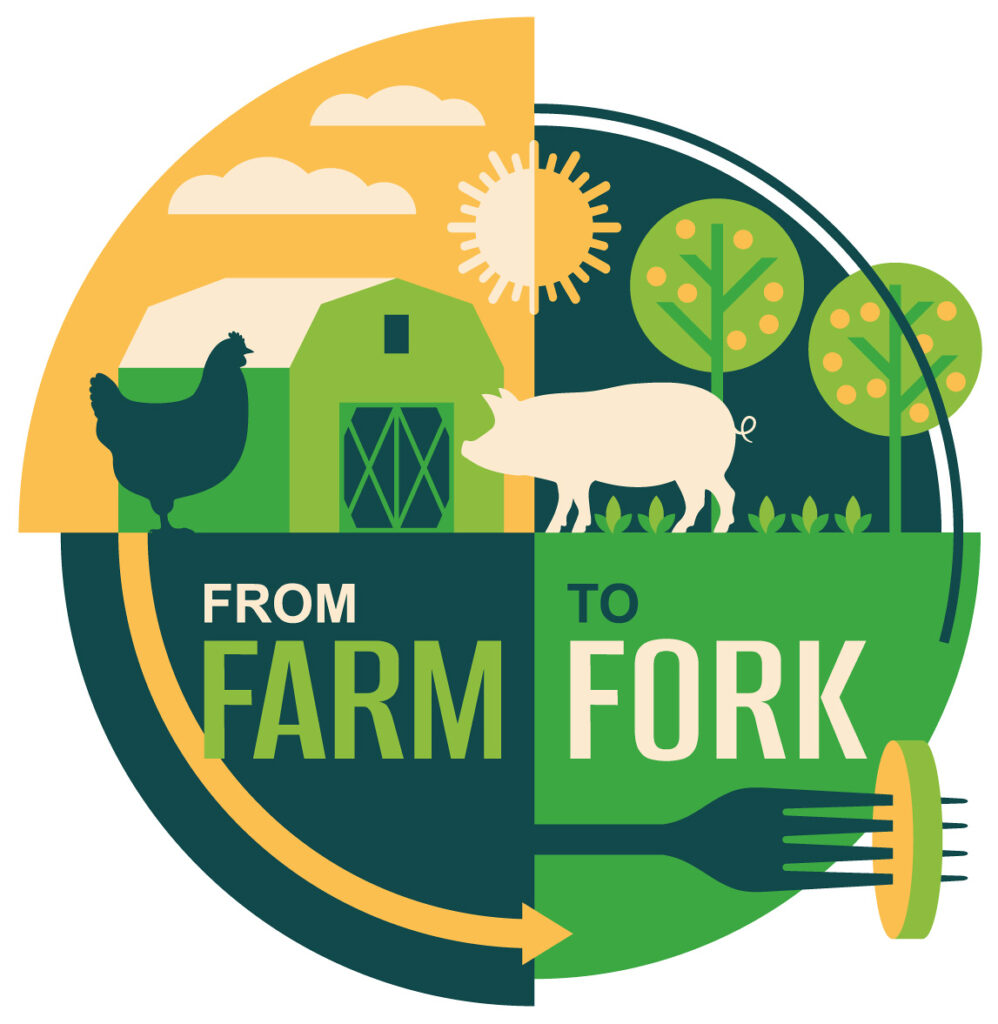
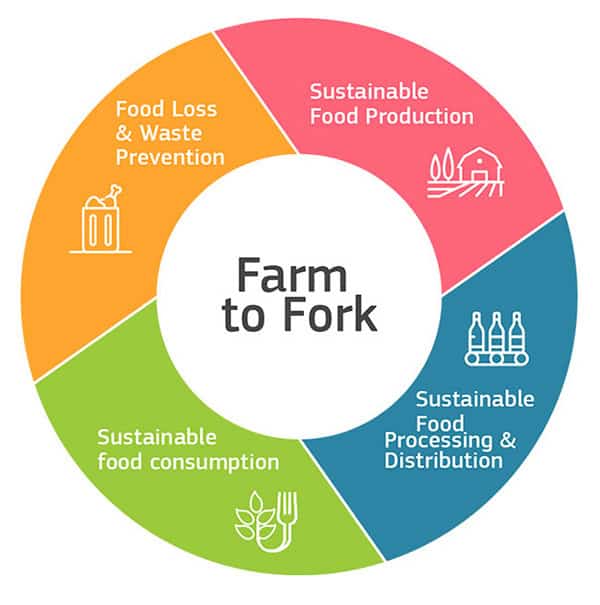
Figure 1 • Aspects of the European Union’s farm to fork strategy.
https://food.ec.europa.eu/horizontal-topics/farm-fork-strategy_en
Can Perlite Enhance Fertilizer’s Efficiency?
Fertilizers are not only important to crop yields, secure production, and increasing farmers’ incomes, but also in enhancing cultivation efficiency and thus reducing the farmland needs. However, the excessive use of fertilizers leads to serious issues such as nitrogen leaching, soil compaction, loss of soil carbon and organic matter, and serious soil degradation.
Fertilizer reduction is a primary concept and core objective in most institutional policies, including the Food and Agriculture Organization of the United Nations (FAO), and the Common Agricultural Policy (CAP) of the European Union (EU). The European Green Deal, approved in 2020, is a set of policy initiatives by the European Commission with the overarching aim of making the European Union climate neutral by 2050. The plan is to review each existing law on its climate merits and introduce new legislation on the circular economy, building renovation, biodiversity, farming, and innovation. The program was approved in 2020 with a total budget of one trillion euros for the current decade.
The Farm to Fork Strategy is at the heart of the European Green Deal aiming to make food systems fair, healthy, and environmentally friendly; it comprehensively addresses the challenges of sustainable food systems and recognizes the inextricable links between healthy people, healthy societies, and a healthy planet. This strategy implementation is motivated by an urgent need to reduce dependency on pesticides and antimicrobials, reduce excess fertilization, increase organic farming, improve animal welfare, and reverse biodiversity loss. To achieve the goals set, a pillar action is the reduction in the use of fertilizers by a solid 20% (at least) by 2030.
This will be achieved by:
- Implementing and enforcing the relevant environmental and climate legislation in full.
- Identifying with Member States the nutrient load reductions needed to achieve these goals.
- Applying balanced fertilization and sustainable nutrient management.
- Managing nitrogen and phosphorus better throughout their life cycle.

Furthermore, the Commission will also work with Member States to extend the application of precise fertilization techniques and sustainable agricultural practices, notably in hotspot areas of intensive livestock farming and of recycling of organic waste into renewable fertilizers.
Study Motivation
Expanded perlite has established a vital role in agriculture as soil amendment media providing aeration, increasing water-holding capacity, and improving drainage properties. In addition, it has been proven that the use of expanded perlite can reduce the irrigation water by up to 50% without affecting the plant growth and health (applied for grass and Bougainvillea plants) in hot and arid climates, as well as in the Mediterranean climate. Interestingly, the researchers observed an increase in phosphorus, nitrogen, and potassium in plants’ tissues when the growing media contained perlite. The Perlite Institute decided to focus on this preliminary but very important finding by extending the research project that was focused on irrigation water reduction for one more year.
The Project
Researchers from the Agricultural University of Athens were contacted by the Perlite Institute to implement a study on the effect of fine perlite on nutrients’ retention in the rhizosphere soil environment. The project “Geochemical Behaviour of Macronutrients in Various Soil Types Amended with Perlite. Column Experiments” was aimed to examine the hypothesis of reduced nitrogen, potassium, and phosphorus leaching from soils with different physico-chemical properties in the presence of fine perlite, which would prove their retention in perlite soil mixture and thus render it available for the plant. Tests were carried out using soil-perlite column and solely perlite in aqueous solution, using experimental setups that are depicted in Figure 2.
THE COLUMN LEACHING EXPERIMENT
For the column leaching experiment, four topsoil samples with various physico-chemical properties were chosen based on their pH—two acidic and two alkaline. The soils were analyzed for their pH and electrical conductivity (EC) values, the organic matter content, and the grain size distribution (soil texture) following special protocols1. The addition of macronutrients in the columns was achieved by fertilization using a commercial fertilizer (N-P-K) 20-20-20 formulation. The application was completed in two doses of 100 ml in total. Finally, the concentrations of macronutrients were determined in the collected leachate.
BATCH EXPERIMENTS
In batch experiments, perlite was poured in a water solution with known concentrations in N-P-K. After materials interaction the final concentrations of the elements of interest in aqueous solution were measured to determine the amounts retained by perlite.
Presentation of Results and Major Findings
The properties of the four soils are summarized in Table 1. The two soils (S1, S2) are acidic and the other (S3, S4) alkaline. Regarding soil texture, S1 is a Sandy-Clay, S2 and S3 are Sandy-Loam and S4 is Loam. The maximum EC value was recorded for S3 soil, while EC of the other three soils is considered as similar. Organic matter content showed high variability and ranged from 0,98 (S1) to 5,3% (S3).
In many cases, when perlite has been incorporated into the soil mixture, the nutrients concentration in the leachate is similar or less than the control case, meaning that the residual N, P, and K remain in the soil matrix. This situation is ideal, because under such conditions the availability of the nutrients in the root system is prolonged, and the chances to be absorbed by the plant are enhanced, leading to an overall increase of the efficiency of the fertilizer.
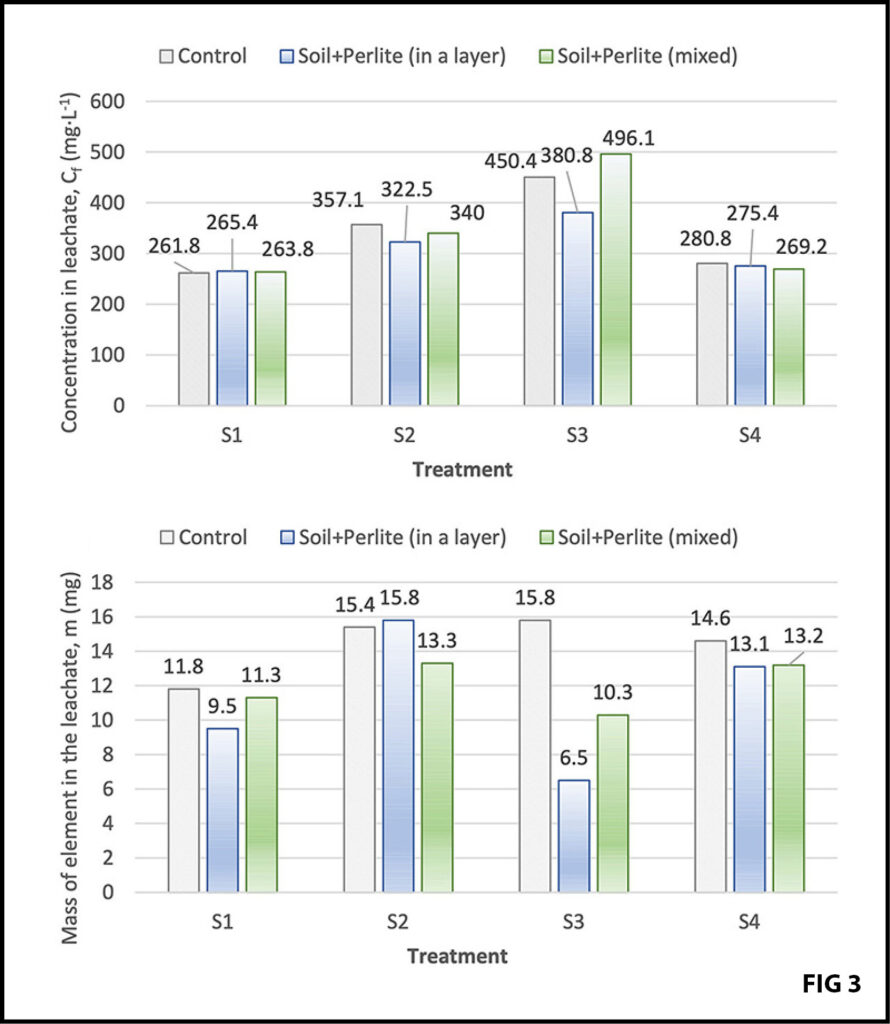
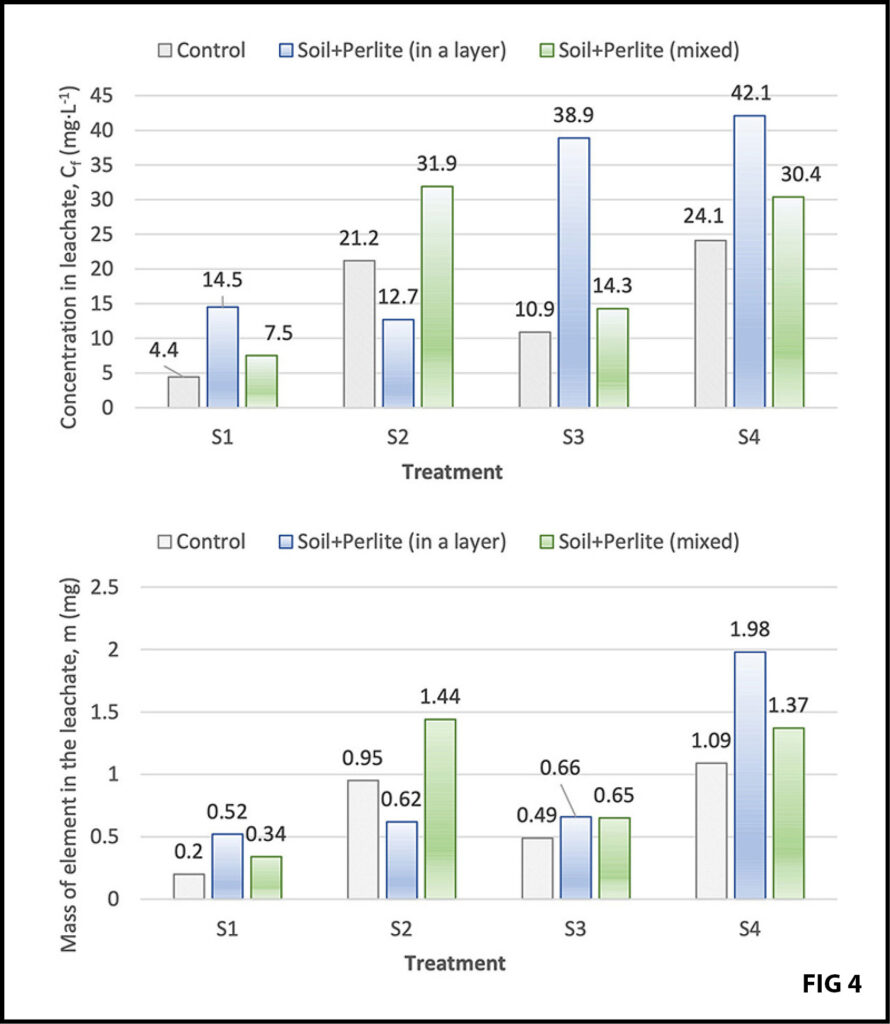
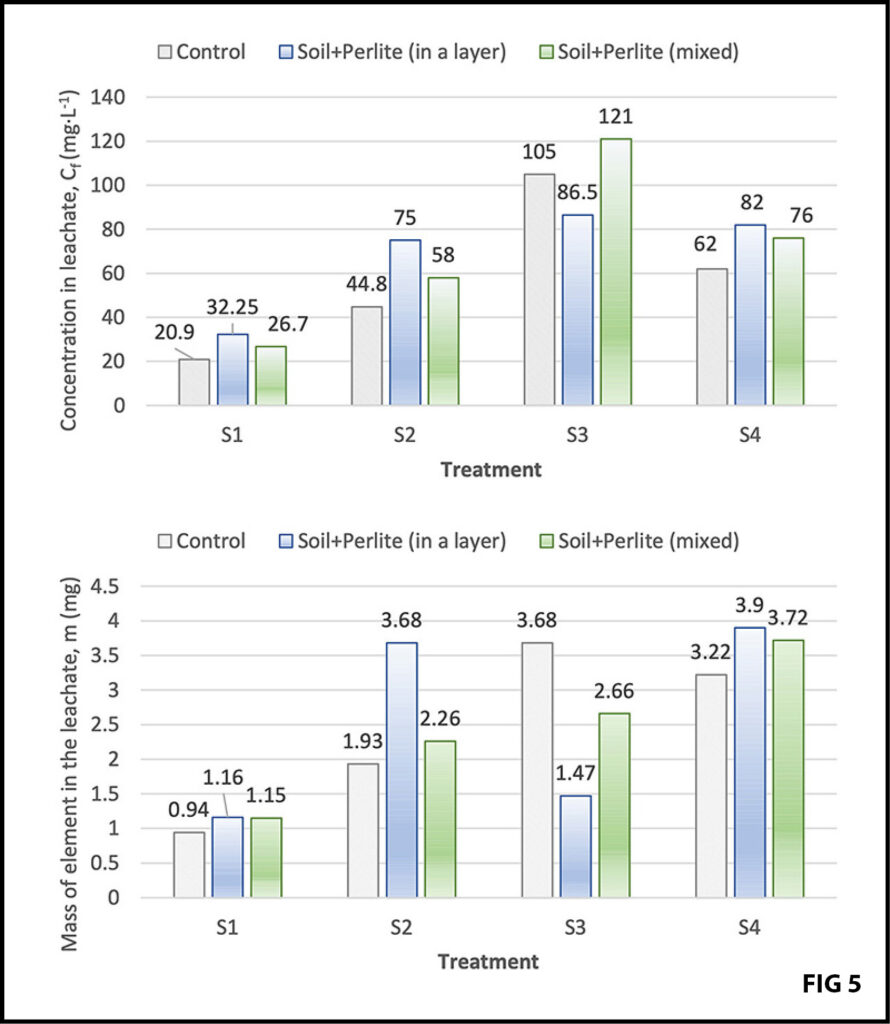
Figures 3, 4, and 5 • Present the concentration of collected leachate in various leachates in nitrogen, phosphorus and potassium, respectively.
Figure 6 depicts measurements of nutrient sorption of perlite for N, P, and K under different initial concentration in aqueous solution. At the specific conditions and the applied range of nutrients concentration, nutrients sorption has been identified, thus confirming the validity of the column leaching experiments results and proving that the presence of perlite led to increases of the nutrients residence time.

Conclusions
There are three major conclusions drawn from this study:
- It was shown that, under the conditions applied in the experiments and for the specific soil types, perlite demonstrated remarkable nutrient adsorption capacity, exceeding ion exchange expectations and suggesting the involvement of physisorption mechanisms.
- The presence of perlite significantly affected leaching rates and nutrient mobility within the soil, underscoring the necessity for site-specific optimization.
- Soil characteristics played a pivotal role in determining the effectiveness of perlite, emphasizing the importance of customized approaches.
It appears that the well-known effect of expanded perlite as soil amendment can help increase the efficiency of fertilizers under the conditions tested in this study. Taking this into account, an opportunity emerges that expanded perlite can potentially be a key player in the global movement towards the reduction of fertilizers. We should keep in mind that the soil-water system is complex, with the soil properties having a deterministic role in its total behavior. Thus, a customized approach should be applied to ensure the desirable performance after the selected mix design and application technique, as well as for optimization purposes.

REPORT OF THE STUDY
Download a copy of the study report here.
OTHER RELEVANT PUBLICATIONS FROM THE PERLITE INSTITUTE
Available for free at www.perlite.org/library
- Test report of project funded by Perlite Institute entitled: Incorporation of perlite in sandy soil as a measure to reduce irrigation water needs of turf grass and Bougainville
- Test report of a project funded by Gulf Perlite LLC entitled: Evaluating perlite as a soil additive to save water in urban landscapes
- Brochure of the Perlite Institute entitled: Effective Watering of Horticultural Perlite
To download a .pdf of the Interaction of Perlite With Fertilizer Nutrients in Different Soil Types brochure, click here.
If you have technical questions on this topic, please email the technical contacts listed on our contact page.
Copyright © 2024 Perlite Institute All Rights Reserved
